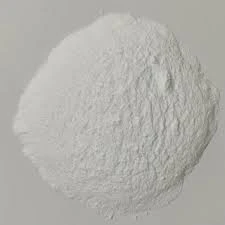Neutralizing Amine in Boiler Feed Water Importance and Best Practices
Boilers are vital components in various industries, playing a crucial role in energy generation and process heating. However, the efficiency and longevity of a boiler system can be severely compromised by water quality issues, primarily related to corrosion and scaling. One effective method to combat such challenges is the use of neutralizing amines in boiler feed water. This article explores the significance of neutralizing amines, their functionality, and best practices for their application.
Understanding Neutralizing Amines
Neutralizing amines are organic compounds that serve as corrosion inhibitors in boiler systems. They work through a chemical reaction that raises the pH levels of the water in the boiler, promoting a more alkaline environment. Common neutralizing amines include morpholine, cyclohexylamine, and diethylaminoethanol. By maintaining an alkaline pH, these amines help to prevent the corrosive effects of carbonic acid, which forms when carbon dioxide dissolves in water.
The Importance of pH Control
The pH level of boiler feed water is a critical parameter that influences the entire system's integrity. A low pH can lead to increased corrosion rates, which can cause significant damage to the boiler, leading to costly repairs and unplanned downtime. Conversely, an excessively high pH can lead to scaling, another issue that can affect heat transfer efficiency. Therefore, achieving and maintaining an optimal pH range is vital for the boiler's operational efficiency and longevity. Neutralizing amines play a vital role in this balancing act, ensuring that the pH remains within the desired limits.
Mechanism of Action
Neutralizing amines operate by neutralizing acids formed within the boiler system. When water containing carbon dioxide enters the boiler, it can react with the water to form carbonic acid. This acid, if left unchecked, can cause the pH to drop, leading to corrosion. Neutralizing amines readily react with carbonic acid to form non-corrosive substances, effectively mitigating the corrosion risk. Additionally, they also assist in the formation of a protective layer on boiler metal surfaces, further enhancing corrosion resistance.
neutralizing amine in boiler feed water

Best Practices for Application
1. Dosage Control Proper monitoring and control of neutralizing amine dosing are essential. Overdosing can lead to high pH levels, while underdosing may fail to effectively protect against corrosion. Regular testing of the boiler water's pH and amine concentration will ensure the correct balance.
2. Compatibility Testing Different amines can exhibit varying degrees of effectiveness depending on the specific boiler design and the presence of other chemicals. Conducting compatibility tests with other water treatment products is crucial to avoid adverse reactions.
3. Regular Monitoring Routine analysis of boiler water chemistry is vital to ensure that the levels of neutralizing amines and pH remain stable. Automated monitoring systems can provide real-time data and alerts, facilitating timely intervention.
4. Staff Training Training personnel on the importance of water chemistry and the role of neutralizing amines is essential. Educated staff can better manage boiler operations and respond to any issues that arise.
Conclusion
In summary, the use of neutralizing amines in boiler feed water is a fundamental practice in maintaining boiler efficiency and extending its service life. By effectively managing pH levels and preventing corrosion, these compounds play a crucial role in the overall operation of industrial boilers. Adopting best practices for their application will ensure that boiler systems operate reliably and efficiently, ultimately leading to cost savings and enhanced productivity.

